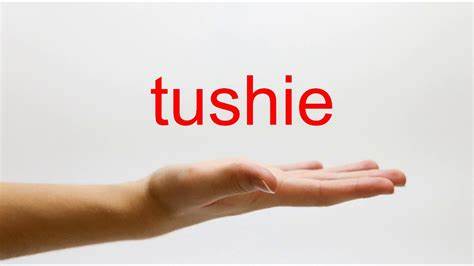In the vast tapestry of human anatomy, few body parts have garnered as much attention, humor, and cultural significance as the tushie. A colloquial term for the buttocks, the tushie is more than just a functional part of the body—it’s a symbol of beauty, strength, sexuality, and even humor. From ancient art to modern pop culture, the tushie has played a pivotal role in human expression and continues to be a subject of fascination and discussion. In this article, explore the evolution and cultural significance of the tushie.
The Anatomy and Function of the Tushie
The tushie, or buttocks, consists of the gluteal muscles, fat tissue, and skin. The primary muscles in this area are the gluteus maximus, gluteus medius, and gluteus minimus. These muscles are some of the strongest in the human body, playing a crucial role in movement, posture, and stability. The gluteus maximus, in particular, is responsible for the extension and outward rotation of the hip, enabling actions like walking, running, and climbing.
Beyond movement, the tushie serves as a cushion for the pelvis and acts as a storage area for fat. This fat storage has evolutionary significance, as it provides energy reserves that were vital for our ancestors during times of scarcity. The rounded shape of the buttocks, often accentuated by this fat, has been a point of aesthetic interest for centuries, influencing beauty standards across different cultures.
Historical Perspectives on the Tushie
The human fascination with the tushie dates back to ancient times. In prehistoric art, such as the Venus figurines, exaggerated buttocks were depicted as symbols of fertility and health. These small statuettes, found across Europe and Asia, suggest that early humans associated larger tushies with the ability to bear children and survive harsh conditions.
In ancient Greece, the idealized human form often included well-proportioned buttocks. Greek sculptures, such as the famous statue of Venus de Milo, celebrate the beauty of the human body, with particular attention to the curves of the hips and buttocks. This appreciation for the tushie continued in Roman art and was later revived during the Renaissance, where artists like Michelangelo and Botticelli depicted the human form in all its glory.
The Tushie in Modern Pop Culture
Fast forward to the 20th and 21st centuries, and the tushie has taken on new cultural meanings. In the world of fashion, music, and entertainment, the shape and size of the buttocks have become central to discussions of beauty and body image. Celebrities like Jennifer Lopez, Beyoncé, and Kim Kardashian have been celebrated for their curvaceous figures, leading to a renewed emphasis on the tushie as a symbol of attractiveness.
This focus on the tushie has also led to various fitness trends aimed at enhancing the gluteal muscles. Exercises like squats, lunges, and deadlifts have become staples in workout routines, with many people striving to achieve a rounder, firmer tushie. The popularity of these workouts reflects the growing desire to meet contemporary beauty standards, which often prioritize a well-defined posterior.
In addition to its role in beauty, the tushie has become a subject of humor and light-heartedness in popular culture. From cheeky greeting cards to playful nicknames, the tushie is often used to evoke laughter and camaraderie. This humorous take on the tushie highlights its dual nature as both an object of desire and a source of amusement.
The Tushie in Different Cultures
While the modern Western world has placed a significant emphasis on the appearance of the tushie, other cultures have their unique perspectives. In some African and South American societies, fuller buttocks have been traditionally admired as symbols of fertility, wealth, and social status. For example, the Khoisan people of Southern Africa have a cultural appreciation for steatopygia, a condition characterized by the accumulation of fat in the buttocks, which is seen as a sign of beauty and fertility.
In contrast, some Eastern cultures have historically valued a more slender physique, with less emphasis on the tushie. However, globalization and the influence of Western media have led to a blending of beauty standards, with many people in these regions now embracing fuller figures.
The Tushie and Body Image
The cultural focus on the tushie has had both positive and negative effects on body image. On one hand, the celebration of curvier figures has helped challenge the thin ideal that dominated the fashion industry for much of the 20th century. This shift has been empowering for many people, particularly women, who feel more confident and comfortable in their bodies.
On the other hand, the pressure to achieve a certain look has also led to body dissatisfaction and unhealthy behaviors. The rise of cosmetic surgery, particularly procedures like Brazilian Butt Lifts (BBLs), highlights the lengths to which some individuals will go to enhance their tushies. While these surgeries can provide desired results, they also carry significant risks, including complications and long-term health issues.
The media’s portrayal of the ideal tushie often excludes those who do not fit into conventional beauty standards. This exclusion can lead to feelings of inadequacy and contribute to a narrow definition of beauty. It’s important to recognize that beauty comes in all shapes and sizes, and the value of a person should not be determined by the appearance of their tushie.
The Tushie in Health and Fitness
In addition to its cultural significance, the tushie plays a crucial role in overall health and fitness. Strong gluteal muscles are essential for maintaining proper posture, preventing lower back pain, and enhancing athletic performance. A well-conditioned tushie can improve balance, stability, and power in activities like running, jumping, and lifting.
For those looking to strengthen their tushie, a combination of resistance training, cardiovascular exercise, and proper nutrition is key. Squats, lunges, and hip thrusts are particularly effective at targeting the gluteal muscles. Additionally, incorporating flexibility exercises, such as yoga or Pilates, can help maintain the health and functionality of the tushie.
It’s important to approach fitness with a focus on health rather than solely aesthetics. While a toned tushie may be a desirable goal, prioritizing overall well-being will lead to more sustainable and fulfilling results.
The Tushie in Social Media and the Digital Age
The digital age has amplified the cultural significance of the tushie, with social media platforms like Instagram and TikTok playing a pivotal role in shaping beauty trends. The rise of the “fitspiration” movement has led to a proliferation of images and videos showcasing toned and sculpted tushies, often accompanied by workout tips and diet advice.
While social media can be a source of motivation, it can also contribute to unrealistic expectations and comparison. The curated nature of online content often presents an idealized version of reality, leading viewers to feel pressure to conform to certain standards. It’s important to approach social media with a critical eye, recognizing that everyone’s body is unique and that self-worth should not be based on appearance alone.
Conclusion
The tushie is a remarkable part of the human body, rich in cultural, historical, and personal significance. Whether celebrated for its aesthetic appeal, admired for its strength, or appreciated for its humor, the tushie occupies a unique place in our collective consciousness.
As we navigate the complexities of body image and beauty standards, it’s important to embrace the diversity of the human form. The tushie, like all parts of the body, comes in many shapes and sizes, each with its own beauty and value. By celebrating our differences and focusing on health and self-acceptance, we can cultivate a more inclusive and positive approach to body image.
In the end, the tushie is more than just a physical feature—it’s a symbol of individuality, strength, and confidence. So whether you admire your tushie for its aesthetic appeal, its functional power, or its role in making you who you are, remember to give it the appreciation it deserves.







